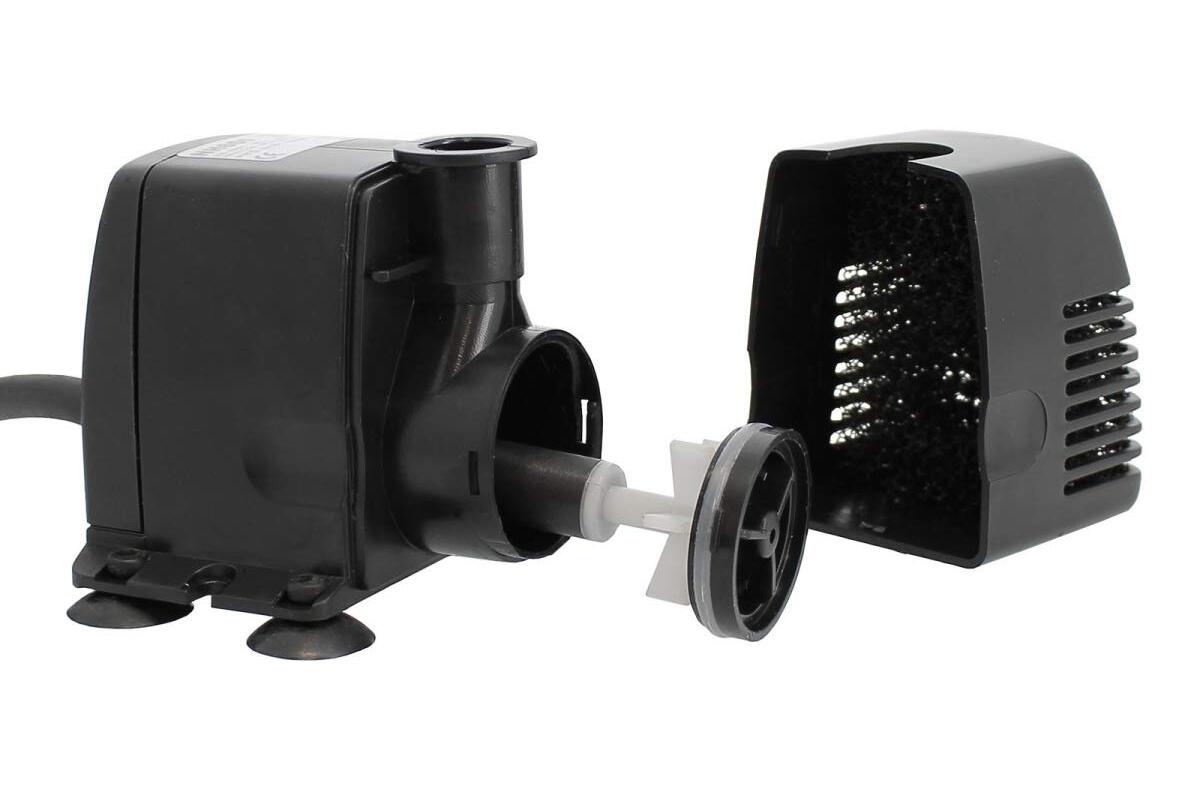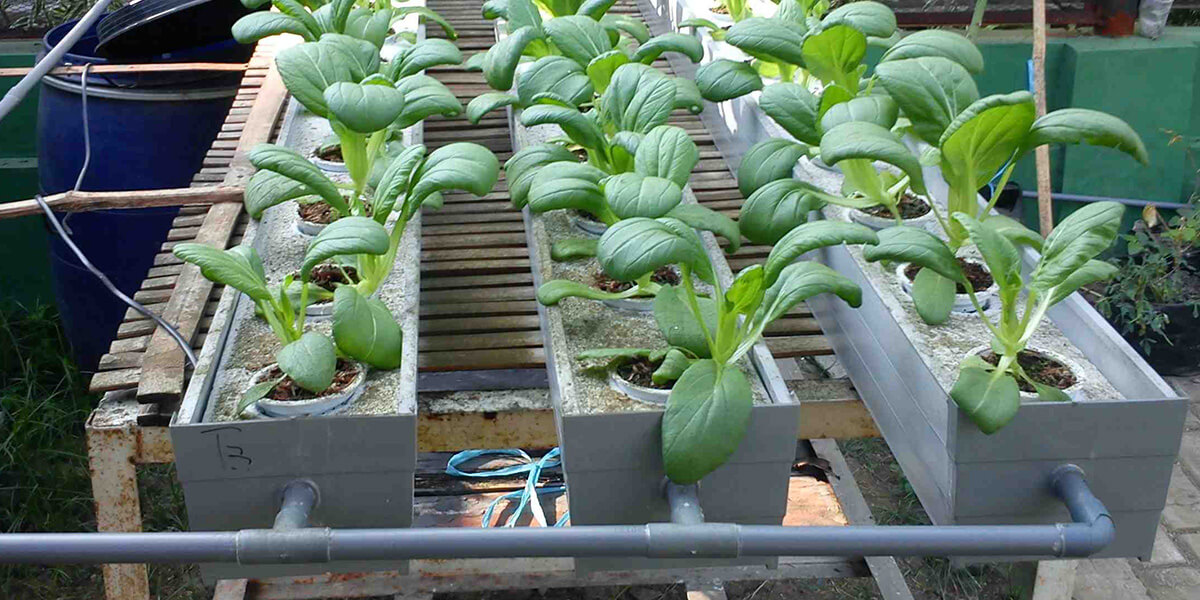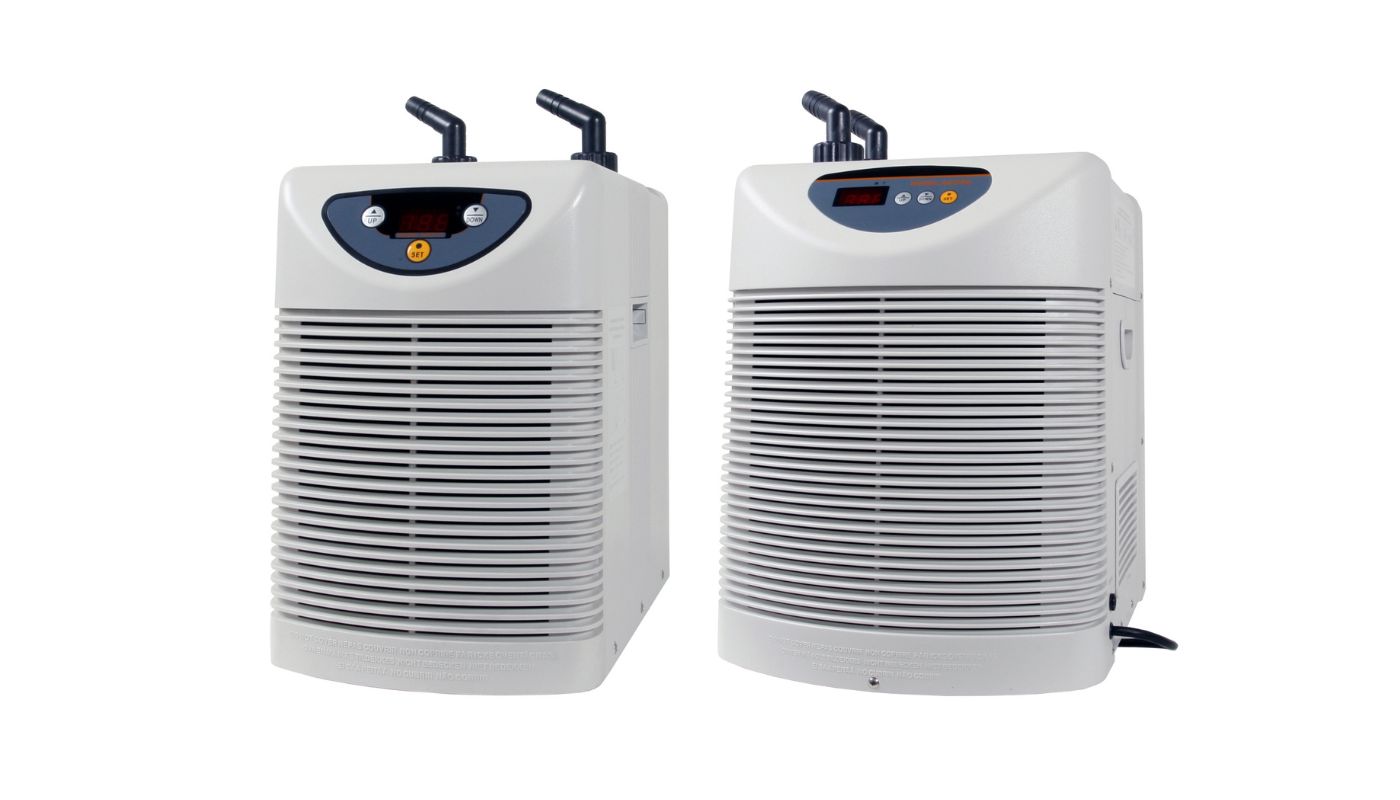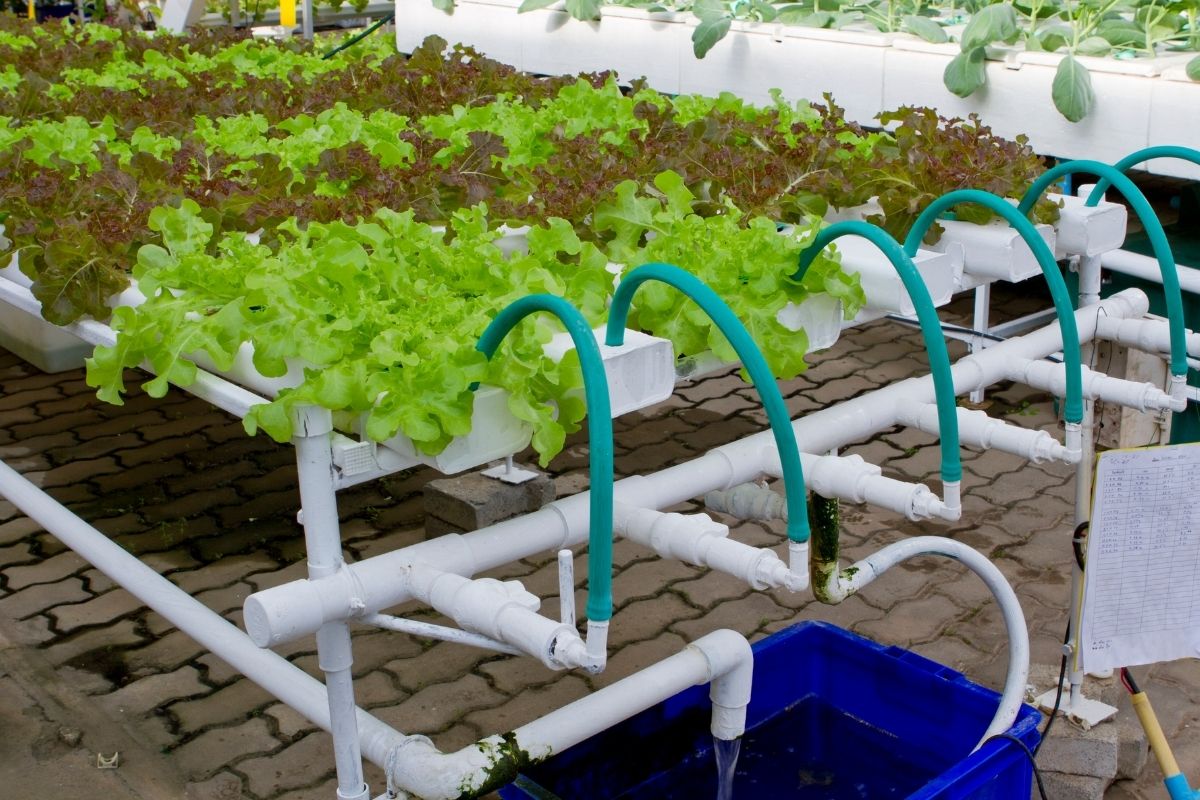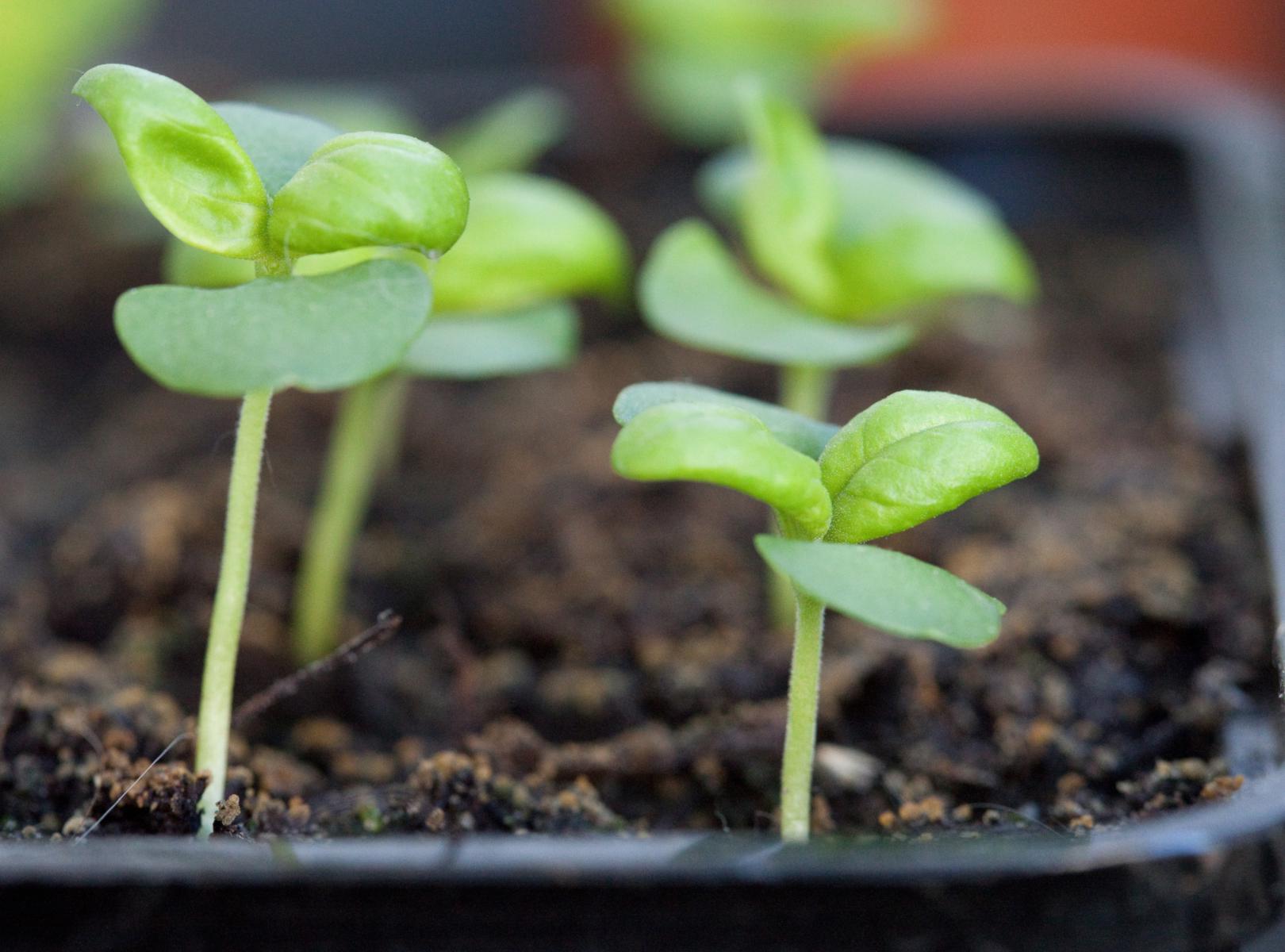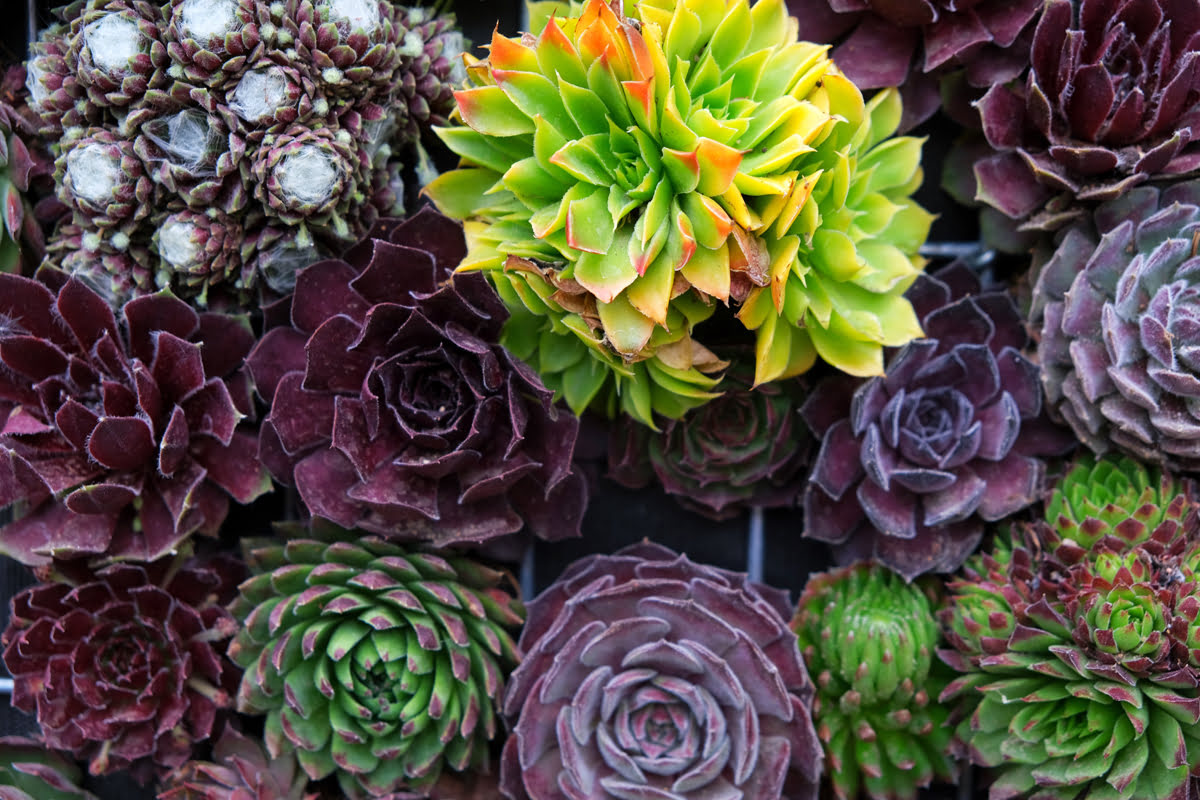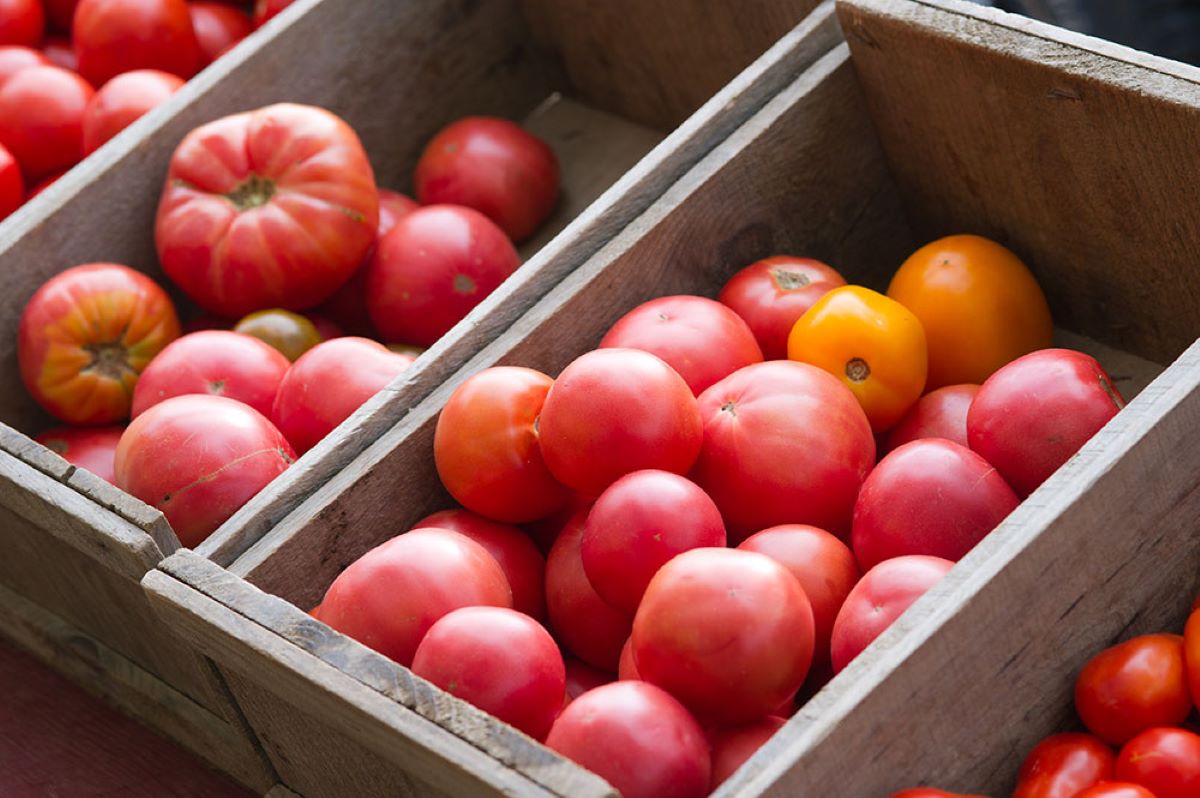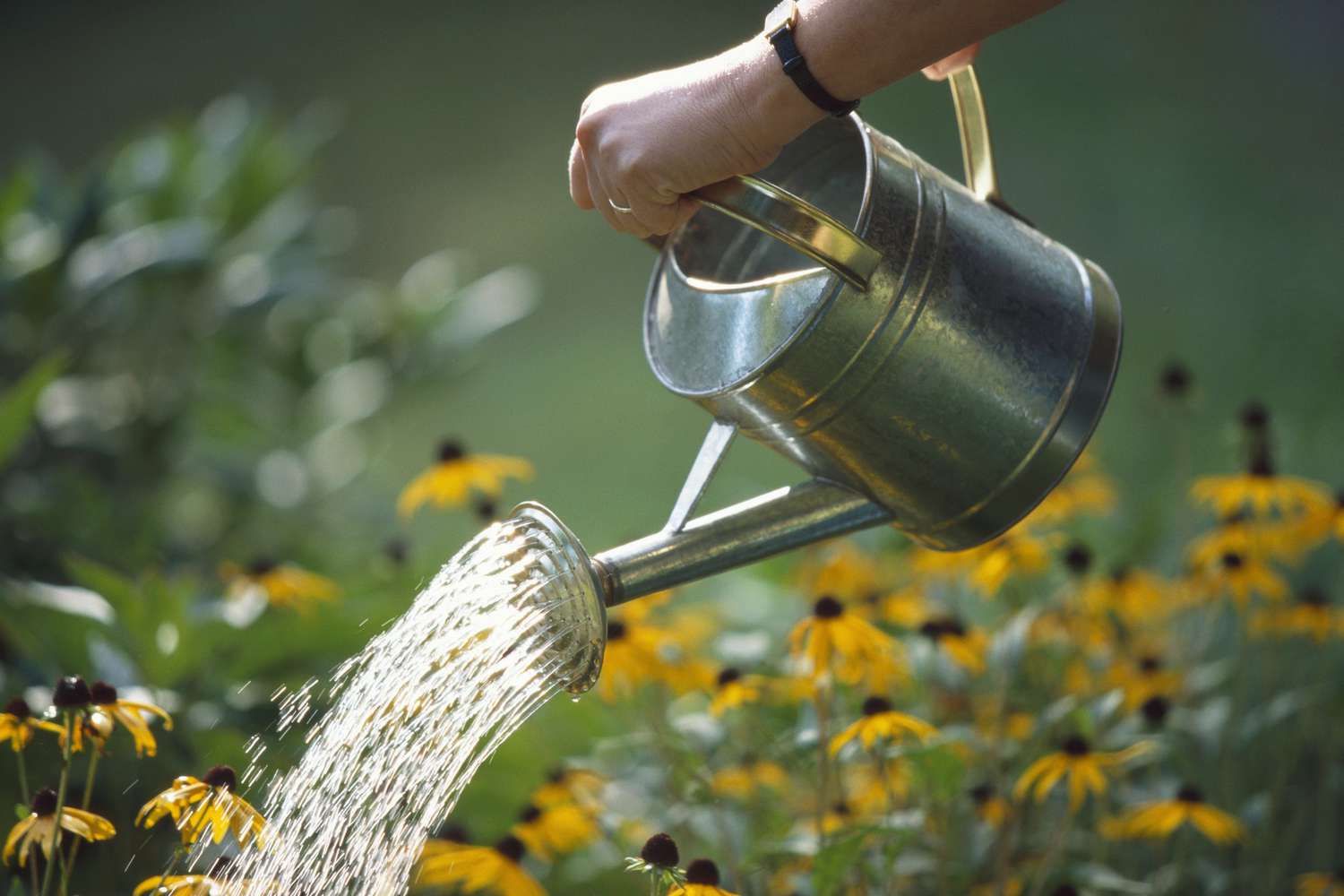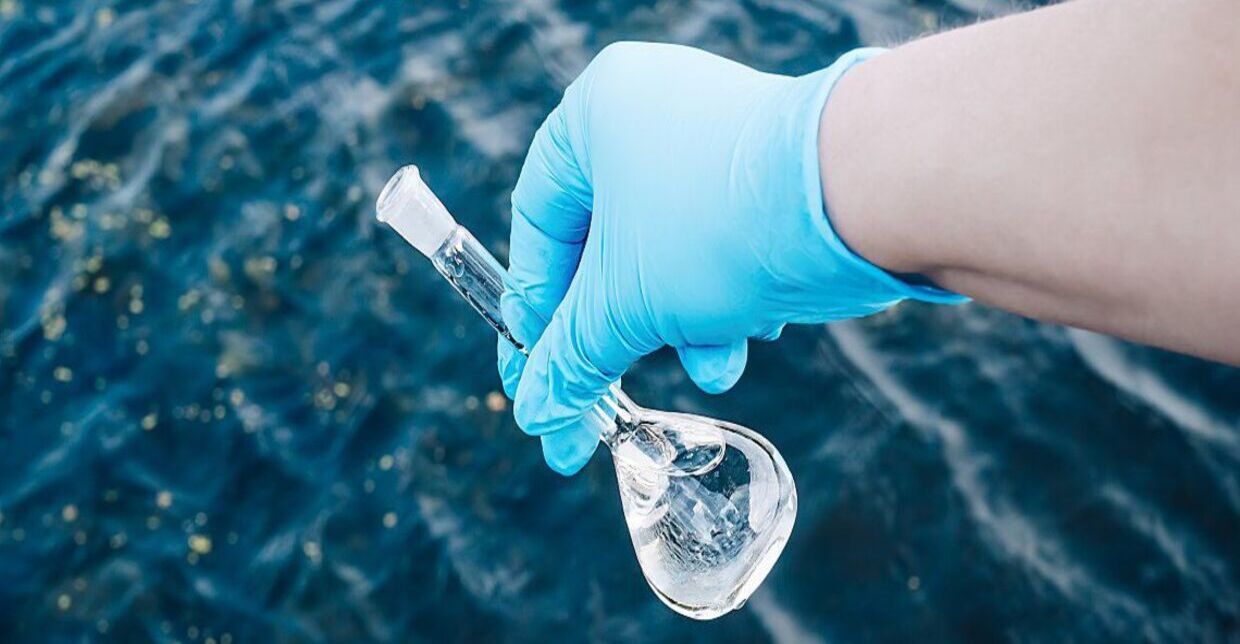Home>Gardening Tips and Tricks>Eco-Friendly Gardening>How To Maintain Water Temperature In Hydroponics
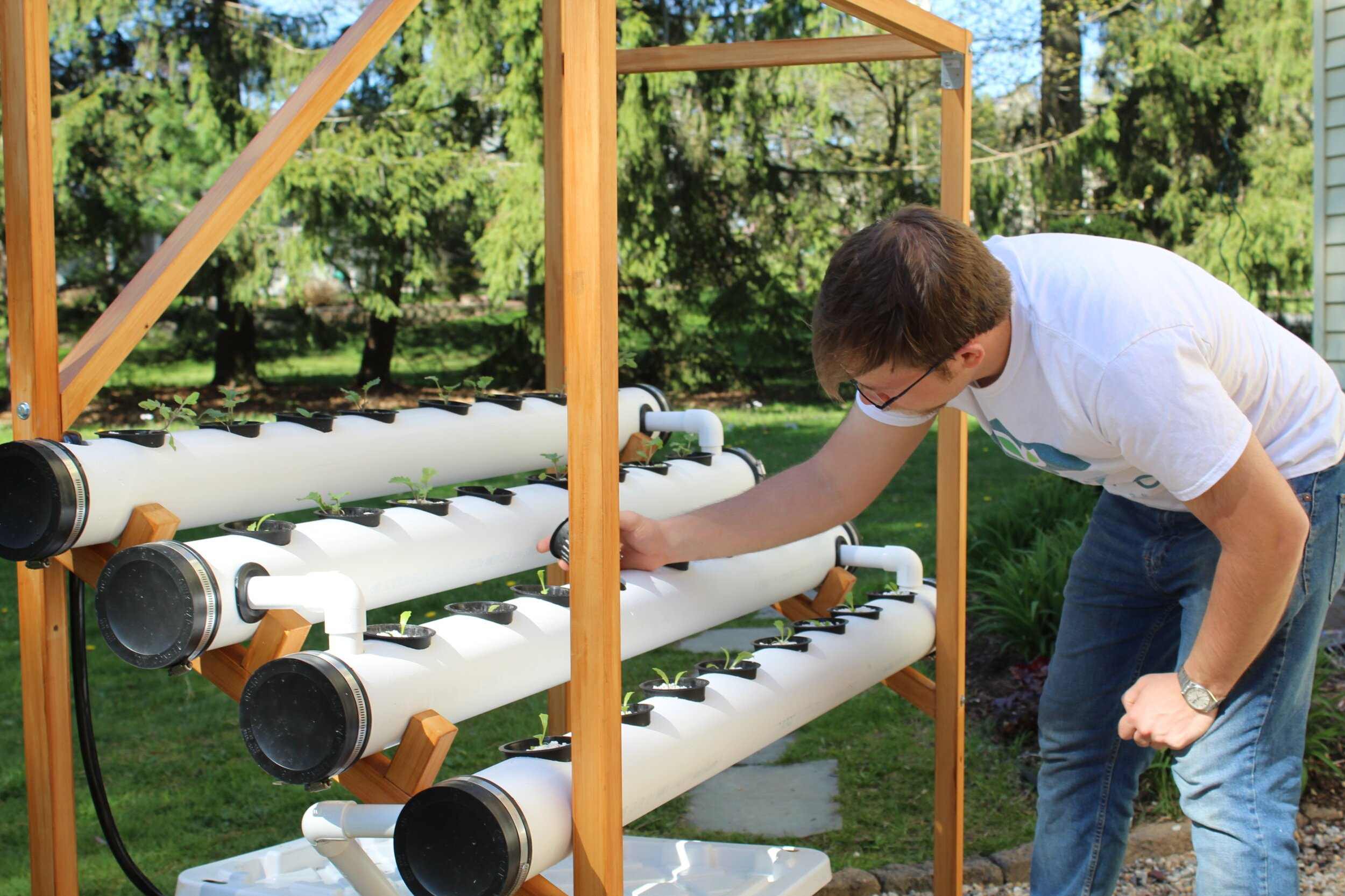

Eco-Friendly Gardening
How To Maintain Water Temperature In Hydroponics
Modified: January 22, 2024
Learn how to maintain water temperature in hydroponics for eco-friendly gardening. Keep your plants thriving with these simple tips and techniques.
(Many of the links in this article redirect to a specific reviewed product. Your purchase of these products through affiliate links helps to generate commission for Chicagolandgardening.com, at no extra cost. Learn more)
Table of Contents
- Introduction
- Understanding the Importance of Water Temperature in Hydroponics
- Factors Affecting Water Temperature in Hydroponics Systems
- Choosing the Right Water Temperature for Different Plants
- Monitoring and Adjusting Water Temperature in Hydroponics Systems
- Methods to Maintain Optimal Water Temperature in Hydroponics
- Heat Control Techniques in Hydroponics
- Cooling Techniques in Hydroponics
- Insulation Methods in Hydroponics
- Conclusion
Introduction
Welcome to the world of hydroponics, a revolutionary method of gardening that has gained popularity for its efficient use of water and space. Hydroponics is a soilless cultivation technique that utilizes a nutrient-rich water solution to grow plants. One crucial aspect of hydroponics is maintaining the optimal water temperature for plant growth and nutrient uptake. In this article, we will explore the importance of water temperature in hydroponics and provide tips on how to maintain it effectively.
Water temperature plays a vital role in hydroponics as it directly affects the overall health and productivity of plants. Different plant species have specific temperature requirements for optimal growth, and maintaining the correct water temperature is essential to ensuring their success in a hydroponic system. Deviations from the optimum temperature can result in stunted growth, nutrient deficiencies, and even plant diseases.
Temperature regulation is crucial because water acts as the medium for delivering nutrients to the plant roots. The water temperature affects the solubility and availability of nutrients, as well as the rate of nutrient absorption by the roots. Additionally, the water temperature impacts the oxygen levels in the hydroponic system, which is vital for root respiration. Too high or too low water temperatures can disrupt these essential processes, hindering plant growth and yield.
It is also important to note that the surrounding environmental temperature can indirectly influence the water temperature in a hydroponic system. Factors such as room temperature, humidity levels, and even sunlight exposure can impact the heat exchange between the environment and the hydroponic water. Therefore, maintaining an optimal water temperature requires a holistic approach to temperature control in both the nutrient solution and the surrounding environment.
In the following sections, we will delve into the various factors that can affect water temperature in hydroponics systems and discuss strategies for maintaining the ideal temperature range. By understanding the significance of water temperature and implementing appropriate techniques, you can ensure the health and productivity of your hydroponic garden. Let’s explore the fascinating world of hydroponics and unlock the secrets to maintaining the perfect water temperature for your plants.
Understanding the Importance of Water Temperature in Hydroponics
Water temperature is a critical factor in hydroponic gardening due to its direct impact on plant growth and nutrient absorption. In traditional soil gardening, the soil acts as a buffer, helping to regulate temperature fluctuations. However, in hydroponics, where plants are grown in a soilless medium, maintaining the ideal water temperature becomes crucial for plant health and productivity.
One of the primary reasons water temperature is essential in hydroponics is its influence on nutrient availability. Most hydroponic systems use water as the medium to deliver a nutrient-rich solution directly to the plant roots. The solubility of nutrients is greatly affected by water temperature. Warmer water promotes faster nutrient absorption, while colder water slows down the process. This means that maintaining the optimal water temperature ensures that plants have a constant supply of nutrients for optimal growth.
Water temperature also plays a vital role in oxygen availability within the hydroponic system. Proper oxygen levels are necessary for root respiration, which is crucial for nutrient absorption and overall plant health. Warmer water has a reduced oxygen holding capacity, meaning that plants may receive less oxygen when the water temperature is too high. Conversely, colder water holds more oxygen, but if the temperature drops too low, it can slow down metabolic processes in plants, leading to stunted growth.
In addition to nutrient availability and oxygen levels, water temperature also affects the activity of beneficial microorganisms that contribute to a healthy root environment. Many hydroponic systems rely on beneficial bacteria and fungi to break down organic matter and make nutrients more available to plants. These microorganisms also help protect against harmful pathogens. Maintaining the appropriate water temperature ensures the optimal growth and activity of these beneficial organisms, promoting a balanced and healthy root environment for plants.
Furthermore, water temperature influences the rate of plant transpiration, which is the process by which plants release moisture through their leaves. With higher water temperatures, transpiration rates increase, potentially leading to higher humidity levels in the hydroponic system. High humidity can create a favorable environment for the growth of fungi and bacteria, increasing the risk of plant diseases. Properly regulating water temperature helps control transpiration rates and maintain the ideal humidity level for plant health.
Understanding the importance of water temperature in hydroponics allows for better control and optimization of plant growth. By maintaining the optimal temperature range, you can ensure efficient nutrient absorption, proper oxygen availability, a thriving root environment, and balanced humidity levels. In the following sections, we will explore the factors that can affect water temperature in hydroponics systems and techniques to maintain the ideal temperature range for different plants.
Factors Affecting Water Temperature in Hydroponics Systems
Several factors can influence the water temperature in hydroponics systems. Understanding these factors is crucial for effectively maintaining the desired temperature range for optimal plant growth and nutrient absorption. Let’s explore the key factors that can affect the water temperature in hydroponics.
1. Environmental Temperature: The surrounding room temperature has a significant impact on the water temperature in hydroponics systems. If the room temperature is high, it can cause the water temperature to rise as well. Conversely, a colder room temperature can lead to a decrease in water temperature. Therefore, regulating the room temperature is essential for maintaining the desired water temperature in hydroponics.
2. Sunlight Exposure: The exposure of the hydroponic system to direct sunlight can also influence the water temperature. Direct sunlight can cause the water temperature to increase rapidly, especially in systems with clear or transparent containers. It is advisable to place the hydroponic system in a location that receives indirect sunlight or to provide a shading mechanism to prevent excessive heating.
3. Nutrient Solution Temperature: The temperature of the nutrient solution that is supplied to the plants directly affects the water temperature in hydroponics. If the nutrient solution is too cold or too hot, it can cause significant fluctuations in the water temperature, thereby affecting plant growth. It is essential to monitor and adjust the temperature of the nutrient solution to maintain a stable water temperature.
4. Heat from Equipment: Hydroponics systems often include equipment such as pumps, heaters, and lights. These devices can generate heat, which can raise the water temperature if not properly managed. It is crucial to ensure proper ventilation and insulation to prevent excessive heat buildup in the system.
5. Water Source Temperature: The temperature of the water source used in hydroponics can impact the water temperature. If the water source is too cold, it can lower the water temperature in the system. Conversely, if the water source is too warm, it can increase the water temperature. Adjusting the water source temperature through heating or cooling methods can help maintain the desired water temperature range.
By considering these factors, you can effectively manage the water temperature in your hydroponics system. It is important to regularly monitor the water temperature and make adjustments as needed to provide the ideal growing conditions for your plants. In the next section, we will discuss how to choose the right water temperature for different plants in hydroponics.
Choosing the Right Water Temperature for Different Plants
Each plant species has specific temperature requirements for optimal growth and nutrient uptake in hydroponics. Choosing the right water temperature is crucial to provide the ideal conditions for your plants to thrive. Let’s explore some general guidelines for selecting the appropriate water temperature for different plants in hydroponics.
1. Leafy Greens and Herbs: Leafy greens like lettuce, spinach, and herbs such as basil and cilantro generally prefer slightly cooler water temperatures ranging from 60°F to 70°F (15°C to 21°C). These plants tend to grow best in cooler environments and higher water temperatures may lead to wilting or reduced growth.
2. Fruit-Bearing Plants: Plants that produce fruits, such as tomatoes, peppers, and cucumbers, typically thrive in slightly warmer water temperatures ranging from 70°F to 80°F (21°C to 27°C). Warmer water enhances nutrient absorption and supports fruit development. However, extreme heat can negatively impact pollination and fruit set, so it is important to monitor water temperature carefully.
3. Root Vegetables: Root vegetables like carrots, radishes, and beets can tolerate a wider range of water temperatures. They generally prefer slightly cooler water, similar to leafy greens, but can tolerate slightly warmer water up to 75°F (24°C). It is important to monitor their growth and adjust the water temperature according to their specific needs.
4. Flowering Plants: Plants that produce flowers, such as roses and orchids, have specific temperature requirements for optimal blooming. Many flowering plants prefer warmer water temperatures ranging from 70°F to 80°F (21°C to 27°C) to support flower development. However, it is important to maintain consistent water temperature and avoid extreme fluctuations that can stress the plants.
It is important to note that these temperature ranges are general guidelines and may vary slightly depending on the specific variety and cultivar of the plant. It is always recommended to refer to seed packets or consult with experts for specific temperature recommendations for the plants you are growing.
Additionally, it is essential to consider the growth stage of the plants. For example, in the germination and seedling stage, most plants prefer slightly warmer water to promote faster and more vigorous growth. As the plants mature, the water temperature can be adjusted according to their specific requirements.
Monitoring the water temperature regularly and making adjustments as needed will help you maintain the optimal conditions for your plants. Utilize a thermometer to measure the water temperature accurately and employ effective temperature control techniques, which we will discuss in the following sections. By choosing the right water temperature, you can provide the best growing environment for your plants and maximize their potential in hydroponics.
Monitoring and Adjusting Water Temperature in Hydroponics Systems
Monitoring and maintaining the optimal water temperature is crucial for the success of your hydroponics system. Regular monitoring allows you to identify any deviations and make necessary adjustments to ensure the ideal growing conditions for your plants. In this section, we will explore effective methods for monitoring and adjusting water temperature in hydroponics systems.
1. Use a Thermometer: The simplest and most accurate method to monitor water temperature is by using a thermometer. Choose a reliable thermometer designed for water temperature measurement and place it in the nutrient solution. Regularly check the temperature to ensure it remains within the desired range for your plants.
2. Temperature Control Systems: Consider investing in temperature control systems specifically designed for hydroponics. These systems are equipped with sensors and controllers that allow for precise monitoring and adjustment of water temperature. Some advanced systems even integrate with automation tools to maintain temperature levels automatically.
3. Adjust the Water Source: If the water temperature from your source is consistently too high or too low, you can adjust it before it enters your hydroponic system. For example, if the water is too cold, you can use a water heater or heat exchanger to raise the temperature. Conversely, if the water is too warm, you can use a water chiller or coolers to lower the temperature.
4. Insulation: Proper insulation can help regulate water temperature by minimizing heat exchange with the surrounding environment. Insulate pipes, containers, and reservoirs with materials such as foam or reflective insulation to prevent heat gain or loss. This helps maintain a more stable water temperature, especially in environments with fluctuating room temperatures.
5. Water Volume: The volume of water in your hydroponic system can also affect its temperature stability. Larger volumes tend to have a more stable temperature as they take longer to heat up or cool down. Consider scaling up your system if temperature fluctuations are a concern, ensuring there is sufficient water volume to maintain temperature stability.
6. Cooling Fans and Ventilation: Adequate airflow and ventilation around your hydroponic system can help dissipate excess heat and maintain a cooler environment. Install cooling fans or ventilation systems to improve air circulation and prevent heat buildup. This is especially important if your system is located in a confined or poorly ventilated space.
By implementing these monitoring and adjustment techniques, you can effectively maintain the ideal water temperature for your hydroponics system. Regularly monitor temperature levels, make adjustments as needed, and ensure consistent monitoring of your plants’ health and growth. In the following sections, we will explore specific heat control and cooling techniques that can help you maintain optimal water temperature in your hydroponics system.
Methods to Maintain Optimal Water Temperature in Hydroponics
Maintaining the optimal water temperature is crucial for the health and productivity of plants in a hydroponics system. Fortunately, there are various methods available to help you regulate and maintain the desired water temperature range. In this section, we will explore some effective techniques to maintain optimal water temperature in hydroponics.
1. Water Chillers: Water chillers are specifically designed to cool down the water temperature in hydroponics systems. They use a refrigeration system to remove heat from the water, helping to maintain the desired temperature range. Water chillers come in different sizes and capacities, allowing you to choose the one suitable for your system’s needs.
2. Water Heaters: If you need to raise the water temperature in your hydroponics system, water heaters can be utilized. Water heaters are designed to heat the water to the desired temperature range, ensuring optimal nutrient uptake and overall plant growth. Like water chillers, they are available in various sizes and capacities to suit different system sizes.
3. Heat Exchange Systems: Heat exchange systems are an efficient way to regulate water temperature by utilizing the surrounding environment. These systems transfer excess heat from the water to a medium, such as air or another water source, and remove it from the hydroponic system. This helps to maintain a stable water temperature without the need for additional heating or cooling equipment.
4. Evaporative Cooling: Evaporative cooling takes advantage of the principle that the evaporation of water cools the surrounding environment. By introducing an evaporative cooling system, such as misters or foggers, you can lower the temperature in the hydroponic system. As the water evaporates, it absorbs heat from the surrounding air, helping to maintain a cooler temperature.
5. Ice Packs or Frozen Water Bottles: In smaller-scale hydroponic systems or when dealing with minimal temperature fluctuations, you can use ice packs or frozen water bottles to cool down the water. Simply place the frozen items in the reservoir or nutrient solution to lower the temperature. This is a cost-effective and easily adjustable way to maintain optimal water temperature in smaller setups.
6. Shade and Ventilation: Controlling the amount of sunlight and providing adequate ventilation around the hydroponic system can help regulate water temperature. Use shades or covers to protect the system from direct sunlight, which can cause excessive heating. Proper ventilation helps dissipate heat and maintain a more stable temperature within the system.
7. Environmental Controls: Investing in an environmental control system can provide precise monitoring and regulation of temperature, humidity, and other factors. These systems use sensors and controllers to adjust conditions, ensuring optimal growing conditions for your plants.
When implementing these methods, it’s crucial to regularly monitor the water temperature and make adjustments as needed. Each hydroponic system is unique, and factors such as the size of the system, location, and plant requirements will influence the choice of temperature control method. By maintaining the optimal water temperature, you can provide the best conditions for your plants and maximize their growth and productivity in your hydroponic garden.
Heat Control Techniques in Hydroponics
Controlling heat is a critical aspect of maintaining the optimal water temperature in a hydroponic system. Excessive heat can negatively impact plant growth and lead to various issues. Fortunately, there are several effective heat control techniques that you can implement to ensure the success of your hydroponics garden. Let’s explore some of these techniques in detail.
1. Insulation: Proper insulation helps regulate heat exchange between the hydroponic system and its surrounding environment. Insulate pipes, reservoirs, and containers using materials such as foam or reflective insulation. This prevents heat gain or loss, keeping the water temperature stable. Insulation is particularly useful when dealing with fluctuating ambient temperatures.
2. Ventilation: Adequate airflow and ventilation are crucial for heat control in hydroponics systems. Good air circulation helps dissipate excess heat and prevents the buildup of hot pockets. Use oscillating fans or exhaust fans to improve air movement within the growing area. This helps maintain a cooler environment, reducing the risk of heat stress for your plants.
3. Shade Cloth: Direct sunlight can rapidly increase water temperature in hydroponics systems, especially during the hot summer months. Use shade cloth or covers to shield your hydroponic setup from excessive exposure to sunlight. This helps prevent overheating and maintains a more stable water temperature throughout the day.
4. Heat Sinks: Heat sinks are materials or objects that absorb and dissipate heat, helping to cool down the hydroponic system. Materials such as rocks, ceramic tiles, or even water barrels can be placed strategically in the system to absorb excess heat. This helps regulate the water temperature and prevents it from getting too high.
5. Water Chilling: If the water temperature is consistently too high, water chillers can be used to cool down the hydroponic system. Water chillers use a refrigeration system to remove heat from the water, helping to maintain the desired temperature range. By circulating the water through the chiller, the heat is dissipated, allowing for better temperature control.
6. Timing of Nutrient Solution Delivery: The timing of nutrient solution delivery can also impact the water temperature in a hydroponic system. To avoid exposing the plants to high water temperatures for extended periods, consider adjusting the schedule for nutrient solution delivery. Deliver the solution during the cooler parts of the day to help maintain lower water temperatures.
7. Location: The location of your hydroponic system can also affect heat control. Avoid placing the setup near heat sources like heaters or direct sunlight. Instead, choose a well-ventilated area with moderate ambient temperatures to help maintain a more stable water temperature.
Implementing these heat control techniques in your hydroponic system will contribute to maintaining the optimal water temperature for your plants. Regular monitoring, combined with appropriate adjustments to these techniques, will ensure that your hydroponics garden remains healthy and productive. In the following section, we will explore cooling techniques that can be employed to further manage water temperature in hydroponics.
Cooling Techniques in Hydroponics
Keeping the water temperature within an optimal range is of utmost importance in hydroponics. If the water temperature rises too high, it can negatively affect plant health and lead to various issues. Implementing effective cooling techniques is crucial to maintain the desired water temperature and ensure the success of your hydroponic garden. Let’s explore some effective cooling techniques for hydroponics systems.
1. Evaporative Cooling: Evaporative cooling is a simple and cost-effective method to lower water temperature in hydroponics. This technique takes advantage of the principle that water evaporation cools the surrounding environment. Use misters, foggers, or atomizers to create a fine mist or fog that evaporates, reducing the water temperature. This method is particularly effective in hot and dry climates.
2. Ice/Water Reservoir: Placing ice or cool water in a reservoir can help lower the overall water temperature in the system. Add frozen water bottles, ice packs, or cold water to the reservoir, allowing it to mix with the nutrient solution. This provides a temporary cooling effect and helps maintain a more suitable water temperature for your plants. Monitor the temperature closely, as adding too much ice can cause drastic temperature drops that may harm the plants.
3. Water Chillers: Water chillers are specifically designed to cool down the water temperature in hydroponics systems. These devices use a refrigeration system to remove heat from the water, helping to maintain the desired temperature range. Water chillers come in different sizes and capacities to suit various hydroponic setups, providing precise and efficient cooling control.
4. Thermal Reflective Barrier: Applying a thermal reflective barrier around the hydroponic system can help minimize heat absorption from the surrounding environment. Use reflective materials such as aluminum foil or reflective insulation to create a barrier that reflects heat and sunlight away from the system. This reduces the heat load and helps maintain a cooler water temperature.
5. Water Cooling Systems: Water cooling systems cool the hydroponic water through heat exchange with a separate cooling loop. These systems use coolant or refrigerant to absorb heat from the water and then transfer it to another medium like air or water. The cooled water is then circulated back into the hydroponics system, maintaining a lower water temperature.
6. Insulation: Insulating the hydroponic system helps regulate temperature by minimizing heat exchange with the surrounding environment. Insulate pipes, reservoirs, and other components using insulation materials like foam or reflective insulation. This helps maintain a more stable water temperature by reducing heat gain or loss.
7. Ventilation and Air Flow: Adequate ventilation and air flow contribute to cooling the hydroponics system. Use fans or blowers to improve air circulation, exhausting hot air out of the growing area. This prevents heat buildup and creates a fresher environment for the plants. Additionally, creating an inlet for cool air to enter the system helps maintain a lower water temperature.
By utilizing these cooling techniques, you can effectively manage the water temperature in your hydroponics system. It is crucial to monitor the water temperature regularly and make adjustments as needed. Each technique has its advantages and limitations, so choose the ones that are suitable for your setup and environmental conditions. Maintaining a cooler water temperature will promote healthy plant growth and maximize the potential of your hydroponics garden.
Insulation Methods in Hydroponics
Insulation plays a vital role in maintaining the stability of the water temperature in a hydroponics system. By minimizing heat exchange with the surrounding environment, effective insulation helps regulate the water temperature, ensuring optimal conditions for plant growth. In this section, we will explore various insulation methods that can be employed in hydroponics.
1. Pipe Insulation: Insulating the pipes in a hydroponic system is crucial to minimize heat transfer between the nutrient solution and the surrounding environment. Use pipe insulation materials such as foam or rubber sleeves to encase the pipes and prevent heat gain or loss. This helps maintain a more stable water temperature as the nutrient solution circulates through the system.
2. Reservoir Insulation: Insulating the reservoir is another key aspect of temperature control in hydroponics. Wrap the reservoir with insulation materials like foam or reflective insulation to minimize heat exchange with the surrounding air. This prevents heat gain or loss from the nutrient solution, helping to maintain a stable water temperature.
3. Container Insulation: If your hydroponic system utilizes containers for plant growth, insulating these containers can help regulate the water temperature. Apply insulation materials to the outside of the containers to minimize heat exchange between the nutrient solution and the surrounding environment. This helps maintain a consistent water temperature and supports optimal plant growth.
4. Reflective Insulation: Reflective insulation materials, such as aluminum foil or reflective bubble wrap, can be used to create a thermal barrier around the hydroponic system. These materials reflect heat and sunlight away from the system, reducing heat absorption and minimizing temperature fluctuations. Install reflective insulation on walls, ceilings, and any other surfaces that may be exposed to heat sources.
5. Air Gap Insulation: Creating an air gap between the hydroponic system and the surrounding environment can provide effective insulation. This involves leaving a space between the system and the walls or floor and filling it with insulation material like foam or air-filled insulation panels. The air gap acts as a thermal buffer, reducing heat transfer and maintaining a more consistent water temperature.
6. Covering or Enclosing the System: Covering or enclosing the hydroponic system with a material that offers insulation properties can help maintain a stable water temperature. Use materials like polyethylene film or glass to create a greenhouse-like structure, which helps retain heat during colder periods and provide shade during hotter periods. This insulation technique is especially beneficial in outdoor hydroponic setups.
Remember to regularly check the insulation materials for wear and tear or signs of damage. Insulation is most effective when properly installed and well-maintained. It’s important to monitor the water temperature regularly and make any necessary adjustments to the insulation methods employed to ensure optimal temperature control.
By implementing these insulation methods, you can minimize heat exchange and maintain a more consistent water temperature in your hydroponic system. This stability provides your plants with the ideal conditions for growth and maximizes the potential of your hydroponics garden.
Conclusion
In conclusion, water temperature is a crucial factor in hydroponics that directly affects plant growth, nutrient absorption, and overall system health. By understanding the importance of maintaining optimal water temperature, you can create the ideal growing conditions for your plants and maximize their potential in a hydroponic system.
Factors such as environmental temperature, sunlight exposure, nutrient solution temperature, heat from equipment, and water source temperature can all influence water temperature in hydroponics. Monitoring and adjusting the water temperature regularly is essential to ensure that it remains within the desired range for your specific plants.
Choosing the right water temperature for different plant species is crucial. Each plant has unique temperature requirements for optimal growth. Understanding these requirements and providing the appropriate water temperature can significantly enhance plant health and productivity in hydroponics.
To maintain optimal water temperature, effective heat control and cooling techniques can be employed. Insulation methods, such as insulating pipes, reservoirs, and containers, help regulate heat exchange with the surrounding environment, ensuring a more stable water temperature. Reflective insulation, air gaps, and covering or enclosing the system also contribute to temperature control in hydroponics.
Regular monitoring and adjustment of the water temperature, as well as proper implementation of insulation and cooling methods, are key to maintaining a successful hydroponic system. By providing the ideal water temperature, you create the optimal conditions for plant growth, nutrient uptake, and overall system health. With the right knowledge and techniques, you can achieve thriving and productive plants in your hydroponic garden.

